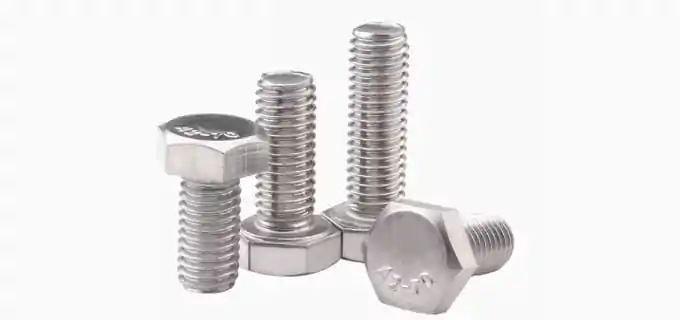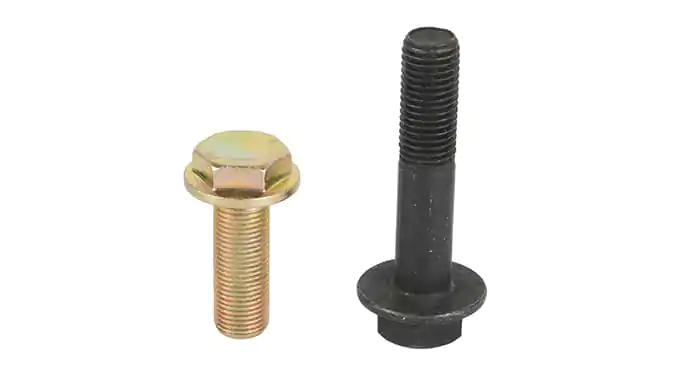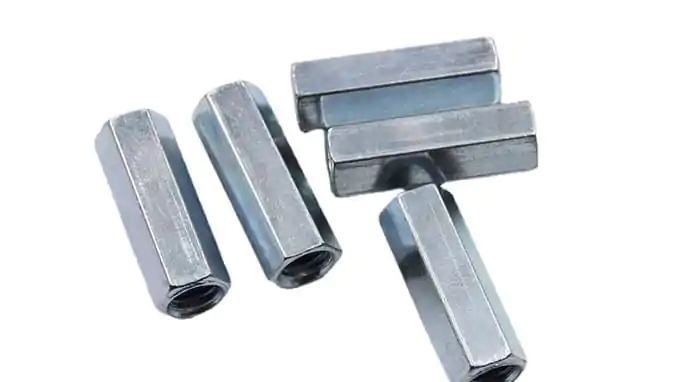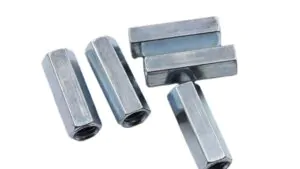When it comes to fastening systems, hex bolts and flange bolts are two of the most common types used in a wide range of industries. Despite their similarities, they differ in design, functionality, and the applications they’re best suited for. In this article, we’ll explore these differences in detail, helping you understand when to use each type of bolt.
Hex bolts feature a simple hexagonal head designed for use with nuts or in tapped holes. They provide strong tensile strength and are versatile, widely used in construction, machinery, automotive repairs, and woodworking. In contrast, flange bolts also have a hexagonal head, but they include a built-in flange under the head. This flange acts like a washer, distributing the load more evenly and enhancing stability without the need for additional components. Flange bolts are ideal for applications where vibration or movement is a concern, such as automotive, piping flanges, and heavy machinery.
Design Features
Hex Bolts
Hex bolts are characterized by their hexagonal head, which allows for easy gripping with a wrench or socket. They have a flat surface beneath the head, making them suitable for use with a nut or in a tapped hole. Their simplicity makes them highly versatile in many fastening applications, from machinery assembly to construction and automotive repairs.

Flange Bolts
Flange bolts also feature a hexagonal head but with a significant difference: they have a built-in flange. This flange is a disk-like projection under the head, increasing the load-bearing area. The flange helps distribute pressure more evenly across the surface being fastened, which reduces the risk of loosening and enhances the strength of the connection.

Load Distribution and Stability
Hex Bolts
While hex bolts are strong and reliable, they require washers to ensure effective load distribution. Without washers, the pressure is concentrated on a smaller area, which could potentially damage the materials being fastened. This makes hex bolts less ideal for applications that involve vibrations or constant movement.
Flange Bolts
Flange bolts, on the other hand, have the advantage of a built-in flange that distributes loads more evenly across the surface. This feature makes flange bolts particularly effective in environments where vibration or movement could loosen a regular bolt. The flange acts as a washer, eliminating the need for separate components and improving the overall stability of the connection.
Applications
Hex Bolts
Hex bolts are widely used in industries where strong fastening is required, including:
- Construction: Securing structural components and heavy equipment.
- Machinery Assembly: Holding parts together in industrial machinery.
- Automotive Repairs: Used to secure various components in vehicles.
- Woodworking: Common in DIY and professional woodworking projects.
Their versatility makes them suitable for a broad range of applications, but they require additional components like washers to ensure optimal performance.
Flange Bolts
Flange bolts are more specialized and are often used in situations where secure connections are required with minimal risk of loosening, such as:
- Automotive Manufacturing: For securing components in high-vibration areas.
- Piping Flanges: Essential for connecting pipes in systems that experience high pressure.
- Heavy Machinery: Common in the construction and mining industries, where stability and durability are paramount.
Flange bolts are ideal for applications with limited space where the added load distribution from the flange provides enhanced reliability.
What Are the Disadvantages of Flange Nuts?
Flange nuts, while offering superior load distribution and vibration resistance, do come with some disadvantages. They can be harder to remove with standard pliers due to the flange design. Additionally, the design might not be suitable for certain mechanical setups where other types of locking mechanisms (e.g., lock nuts) might be more effective.
Flange Bolt vs Washer
When comparing flange bolts vs washers, the key difference lies in the integrated design. A flange bolt already incorporates a flange under the head that serves the same purpose as a washer – distributing pressure more evenly. This eliminates the need for separate washers, making flange bolts a more efficient solution in many cases.
Summary Table
| Feature | Hex Bolts | Flange Bolts |
|---|---|---|
| Head Design | Hexagonal head | Hexagonal head with a flange |
| Load Distribution | Requires washers for effective distribution | Built-in flange distributes load evenly |
| Common Uses | Construction, machinery, automotive | Automotive, piping flanges, heavy machinery |
| Installation | Used with nuts; requires additional components for load distribution | Can be installed without separate washers |
Conclusion
In summary, hex bolts and flange bolts both serve critical roles in fastening applications, but their differences make them suited for different scenarios. Hex bolts provide versatility and strength, making them perfect for a wide range of industries, while flange bolts offer enhanced stability and load distribution, ideal for applications with high vibration or limited space.
Whether you’re working in construction, automotive manufacturing, or machinery assembly, choosing the right type of bolt will ensure the safety and longevity of your projects. Remember, while hex bolts are versatile, flange bolts are often the better choice for high-stress environments requiring extra stability.









